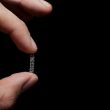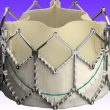With the expansion of transcatheter aortic valve replacement (TAVR) use in the low-risk population, more patients will need repeat valve replacement in the future, making it paramount to understand the performance of repeat TAVR. Currently, this information is limited. The aim of this study was to analyze the real-world experience of performing a second TAVR<a href="https://solaci.org/en/2023/05/24/europcr-2023-tavr-in-tavr-results-with-balloon-expandable-valves/" title="Read more" >...</a>
EuroPCR 2023 | TAVR in Patients with Bicuspid Aortic Valve Stenosis
Bicuspid aortic valve (BAV) stenosis is the most common congenital valve disease, affecting up to 2% of the population. Patients with BAV disease undergoing transcatheter aortic valve replacement (TAVR) account for 0.5%. In this context, TAVR data on BAV stenosis patients has been limited to observational studies on first generation valves that had resulted in<a href="https://solaci.org/en/2023/05/21/europcr-2023-tavr-in-patients-with-bicuspid-aortic-valve-stenosis/" title="Read more" >...</a>
High Implantation of Self-Expanding Valves in the Aortic Position or Cusp Overlapping: Should It Be the New “Gold Standard”?
Transcatheter aortic valve replacement (TAVR) has been proving its benefit in different scenarios for two decades now. However, in the field of self-expanding valves, one challenge has always been its high rate of pacemaker implantation compared with balloon-expandable devices and valvular replacement surgery. For this reason, the high implantation or Cusp Overlapping strategy was developed.<a href="https://solaci.org/en/2023/04/20/high-implantation-of-self-expanding-valves-in-the-aortic-position-or-cusp-overlapping-should-it-be-the-new-gold-standard/" title="Read more" >...</a>
Coronary Physiology after Aortic Valve Intervention
Impact of Aortic Valve Intervention on Coronary Flow Reserve Myocardial flow might be compromised in patients with severe aortic stenosis, which might be driven by CAD and concomitant atherosclerosis or a compromised capillary bed. Capillary circulation might be compromised by increased left ventricular mass (LVM) which in turn might alter coronary flow reserve (CFR). Multiple<a href="https://solaci.org/en/2023/02/27/coronary-physiology-after-aortic-valve-intervention/" title="Read more" >...</a>
Is There any Difference between Modern Valves and Self and Balloon Expandable Valves?
At present TAVR is a valid alternative to treat different risk groups of patients with severe aortic stenosis. Among the different valves, there are two types, the self-expanding (SEV) and the balloon expandable (BEV) valves, that are the most implanted and the most researched by randomized studies across different risk groups. There are different generations<a href="https://solaci.org/en/2022/12/16/is-there-any-difference-between-modern-valves-and-self-and-balloon-expandable-valves/" title="Read more" >...</a>
Valve-in-Valve Shows Good Evolution after 2 Years
The degeneration of bioprostheses in aortic position occurs at approximately after 10 to 15 years. In this scenario, the treatment of choice used to be redo surgery, but with the evolution of transcatheter aortic valve replacement (TAVR), it became a valid alternative with a level IIa B evidence. While there are currently multiple analyses of<a href="https://solaci.org/en/2022/12/02/valve-in-valve-shows-good-evolution-after-2-years/" title="Read more" >...</a>
Apixaban and Valve Thrombosis after TAVR
TAVR has been associated with early valve thrombosis, characterized by thrombus formation in the prosthetic valve with or without valve dysfunction. This dysfunction is related to leaflet thickening and reduced motion, reduced effective orifice area, or increased transvalvular gradient. A multidetector CT scan allows the dynamic assessment of valves and ruling out fibrosis vs. thrombosis. <a href="https://solaci.org/en/2022/09/14/apixaban-and-valve-thrombosis-after-tavr/" title="Read more" >...</a>
Surgical Bioprosthesis Deterioration: Is the Valve-in-Valve Technique a Good Option?
The use of surgical bioprostheses has significantly increased, and while they last 15 years or more, in cases where they fail (usually due to stenosis), the decision-making process is challenging. Transcatheter aortic valve replacement (TAVR) is a good alternative for this situation, although information on the subject matter is still scarce. Currently, the only available<a href="https://solaci.org/en/2022/08/18/surgical-bioprosthesis-deterioration-is-the-valve-in-valve-technique-a-good-option/" title="Read more" >...</a>
Low Risk Patients: TAVR with Self-Expanding Valves Offers Similar Outcomes to Surgery Based on a Bayesian Analysis?
When compared against surgical valve replacement (SAVR) transcatheter aortic valve replacement (TAVR) has shown benefits across different risk groups, not only in events as death and stroke, but also in quality of life (especially in the first months post procedure) and improved symptoms. However, a catch-up phenomenon was observed in low-risk patients between the first<a href="https://solaci.org/en/2022/03/17/low-risk-patients-tavr-with-self-expanding-valves-offers-similar-outcomes-to-surgery-based-on-a-bayesian-analysis/" title="Read more" >...</a>
Are Self-Expandable Valves a Valid Option in Bicuspids?
Bicuspid Aortic Valves (VAV) are challenging for TAVR given its anatomical characteristics and the important presence of calcification. However, current data are promising. Even though traditionally excluded from the larger randomized studies, self-expandable valves appear to have similar evolution to tricuspid aortic valves (TAV) with severe stenosis. Researchers looked at the Low-Risk Bicuspid Study and<a href="https://solaci.org/en/2022/03/16/are-self-expandable-valves-a-valid-option-in-bicuspids/" title="Read more" >...</a>








